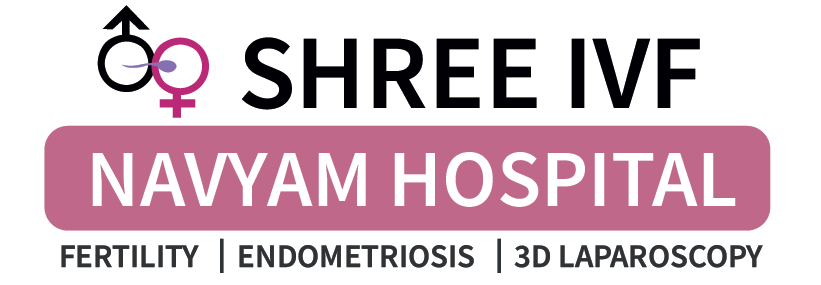
Umbilical Endometriosis is a rare subtype of endometriosis that falls under the broader category of Deep Endometriosis.It’s characterised by the presence of endometrial tissue in the umbilicus, which is the medical term for the navel or belly button. Although it may sound unusual, this condition can be painful and disruptive for those who experience it.
🌿 Umbilical Endometriosis: Symptoms, Diagnosis, and Treatment
✅ What is Umbilical Endometriosis?
Umbilical endometriosis is a rare form of endometriosis where endometrial-like tissue grows in or around the navel (umbilicus).
This condition, also known as Villar’s nodule, accounts for only 0.5% to 1% of all endometriosis cases.
It can occur spontaneously (primary umbilical endometriosis) or as a result of previous abdominal or pelvic surgeries (secondary umbilical endometriosis).
Patients with this condition may experience pain, swelling, and cyclic bleeding from the umbilicus, particularly during menstruation.
🔎 Causes and Risk Factors
The exact cause of umbilical endometriosis is not fully understood, but several factors may contribute to its development:
✅ 1. Retrograde Menstruation:
- Menstrual blood flows backward into the pelvic cavity, allowing endometrial cells to implant in abnormal locations, including the umbilicus.
✅ 2. Direct Implantation:
- After abdominal or pelvic surgery (such as a cesarean section or laparoscopy), endometrial cells can be unintentionally implanted in the umbilical area.
- This is the leading cause of secondary umbilical endometriosis.
✅ 3. Hematogenous or Lymphatic Spread:
- Endometrial cells can travel through the blood or lymphatic system, reaching the umbilicus.
✅ 4. Genetic and Hormonal Factors:
- Estrogen dependency may stimulate the growth of endometriotic tissue.
- Family history of endometriosis may increase the risk.
🔥 Symptoms of Umbilical Endometriosis
The symptoms of umbilical endometriosis are often cyclical, coinciding with the menstrual cycle.
Common symptoms include:
✅ 1. Umbilical Pain:
- Sharp or dull pain in and around the navel.
- Worsens before or during menstruation.
✅ 2. Umbilical Swelling or Mass:
- Firm, dark-colored nodule or lump around the umbilicus.
- May increase in size during menstruation.
✅ 3. Cyclical Bleeding:
- Bleeding or brownish discharge from the umbilicus during menstruation.
- A hallmark symptom of umbilical endometriosis.
✅ 4. Skin Changes:
- Bluish, reddish, or purplish discoloration of the umbilical skin.
- May appear inflamed or tender.
✅ 5. Tenderness or Sensitivity:
- The nodule may become tender to the touch, especially during the menstrual cycle.
✅ 6. Abdominal or Pelvic Pain:
- Some patients experience pelvic pain alongside umbilical symptoms, suggesting pelvic endometriosis.
🔍 Diagnosis of Umbilical Endometriosis
Diagnosing umbilical endometriosis requires clinical evaluation, imaging, and sometimes a biopsy.
✅ 1. Medical History and Physical Examination:
- Review of menstrual symptoms, surgical history, and pain patterns.
- Examination of the umbilical area for nodules, discoloration, or bleeding.
✅ 2. Ultrasound (USG):
- Non-invasive imaging to detect masses or cystic lesions.
- May reveal hypoechoic nodules near the umbilicus.
✅ 3. Magnetic Resonance Imaging (MRI):
- Gold standard for detecting endometriotic lesions.
- Identifies deep-seated endometriosis or adhesions.
✅ 4. Fine Needle Aspiration (FNA) or Biopsy:
- A biopsy of the umbilical nodule confirms the presence of endometrial tissue.
- Helps rule out other skin conditions or malignancies.
✅ 5. Histopathological Examination:
- Tissue sample analysis reveals endometrial glands and stroma, confirming the diagnosis.
💊 Treatment Options for Umbilical Endometriosis
The treatment for umbilical endometriosis aims to:
- Alleviate pain and symptoms.
- Reduce lesion growth.
- Prevent recurrence.
- Improve quality of life.
✅ 1. Medical Management:
- Hormonal Therapy:
- GnRH agonists (leuprolide, goserelin) to reduce estrogen production and shrink lesions.
- Progestins (dienogest, norethindrone) to suppress endometrial growth.
- Combined oral contraceptives (COCs) to regulate hormonal fluctuations.
- Pain Management:
- NSAIDs (ibuprofen, naproxen) to reduce inflammation and pain.
- Neuropathic pain medications (gabapentin) in severe cases.
✅ 2. Surgical Excision:
- Laparoscopic or open surgery to remove the umbilical endometriotic nodule.
- Complete excision reduces the risk of recurrence.
- Wide excision may be necessary in cases with deep infiltration.
✅ 3. Laparoscopic Surgery for Concurrent Pelvic Endometriosis:
- If pelvic endometriosis is suspected, laparoscopic surgery addresses both conditions simultaneously.
- Removes pelvic and umbilical lesions.
✅ 4. Cosmetic Reconstruction:
- Plastic surgery may be performed post-excision to restore the appearance of the umbilicus.
- Improves aesthetic outcomes in cases of extensive excision.
✅ 5. Postoperative Hormonal Therapy:
- Reduces the risk of recurrence.
- GnRH agonists or progestins are often prescribed post-surgery.
⚠️ Complications of Umbilical Endometriosis
If left untreated, umbilical endometriosis can lead to:
❗ Chronic Pain:
- Persistent umbilical or pelvic pain.
- May affect daily activities.
❗ Recurrence:
- Even after surgical excision, there is a risk of recurrence, particularly without hormonal therapy.
❗ Infection or Abscess Formation:
- Rare but possible if the nodule ulcerates or becomes infected.
❗ Umbilical Hernia:
- Large or deep endometriotic nodules can mimic an umbilical hernia, complicating the diagnosis.
💡 Key Takeaway
Umbilical endometriosis is a rare but significant form of endometriosis that presents with cyclic pain, swelling, and bleeding around the navel.
Early diagnosis through imaging and biopsy is essential for effective management.
Treatment often involves surgical excision combined with hormonal therapy to reduce recurrence and manage symptoms. 🌿


